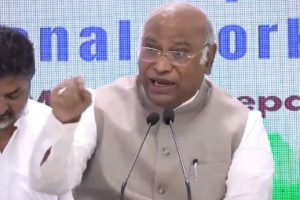Italy, a nation renowned for its rich history, culture and art, is just as famous for its chronic political instability. Since World War II, Italy has danced through an astonishing 68 governments, an average of one every 13 months. To the outside world, this might seem like an annual ritual, an uncanny tradition of sorts. Italy’s political journey is an intricate tapestry that evolved after the end of World War II. Initially, the country emerged from the ruins with a coalition government that sought to rebuild the nation.
Over time, political divisions intensified, leading to a bipolar system dominated by the Christian Democrats and the Communists. This polarisation laid the foundation for decades of shifting governments, predominantly led by the Christian Democrats. The heart of Italy’s political instability lies in its electoral and parliamentary system. With bicameral Houses elected through proportional representation, the country often experienced difficulty in forming majority governments.
Advertisement
Coalition governments, composed of rival parties with contrasting interests, frequently struggled to find common ground. Internal divisions within these parties exacerbated the problem, leading to weak governments and, often, their collapse. Italy’s political system underwent reforms in the 1990s, moving away from proportional representation to a mixed system, which brought about some stability. But as we have seen in recent years, disagreements among coalition members continue to threaten governance.
The proposal for direct election of the Prime Minister, suggested by Italy’s current leader Giorgia Meloni, is a step aimed at addressing these infirmities. It aims to establish a stronger connection between the government and voters by requiring coalitions to nominate Prime Ministerial candidates during elections. Additionally, changes to the electoral law are planned to ensure workable majorities, avoiding hung Parliaments. However, the solution is not without its challenges.
The opposition, particularly the 5-Star Movement and the Democratic Party, argue that such reforms endanger the checks and balances of Italy’s 1948 constitution. Therefore, achieving a two-thirds majority in both houses of Parliament or passing it through a referendum may prove difficult. While direct election of the Prime Minister is a significant reform, it is only part of the solution.
To address this issue comprehensively, some additional steps can be considered. First, reforms should be undertaken to streamline the electoral system further, to ensure it is both representative and stable. Learning from the failures of the past, amendments should be designed to promote government cohesion. Secondly, fostering a culture of cooperation and consensus within political parties and coalitions is crucial. This would involve encouraging leaders to prioritise national interests over party interests and reducing internal divisions that can paralyse governance.
Lastly, addressing economic and social challenges is essential to reduce the appeal of populism. Economic prosperity can diminish support for extremist parties, which often thrive during times of hardship. While Italy’s history of political instability is complex and deeply rooted, it is not an insurmountable challenge.











